Starting a YouTube channel is on a lot of “make money online” lists. However, actually going through with it and turning it into a successful YouTube channel (emphasis on successful), is a whole different beast. To add to this, there are far too many YouTube mistakes that you can make without realizing that may be costly in the long run.
Don’t take my word for it! I’ve been in the “YouTube trenches” for over a decade since I was 16 years old and making Call of Duty gaming videos. I’ve had many channels, including one that has over 200,000 subscribers and generates about $15,000 per month.
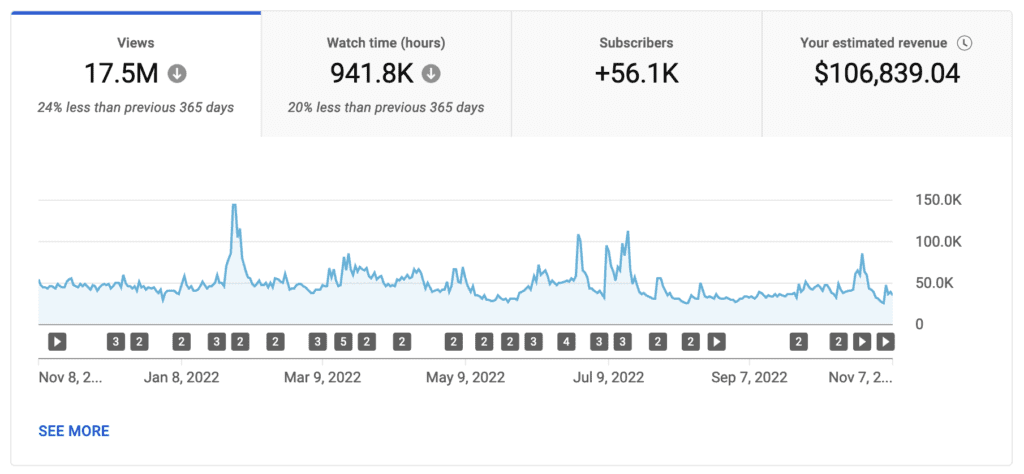
I’ve probably made every possible YouTube mistake out there. They did help me learn the ins and outs of running a successful channel, but I wish someone had told me how to avoid them when I started!
I’ll try to be that person today, and talk about the mistakes you want to avoid when you’re starting with a brand new YouTube channel (or one that’s still small).
Why is YouTube so Lucrative?
YouTube is one of the largest search engines in the world. To creators, it offers things like personalized content and ads and effective video marketing that reaches billions of people. It gives you advanced audience engagement and site statistics, and it has a solid (though sometimes overbearing) spam, fraud and abuse prevention.
If you’re creating video content, uploading it on YouTube is a great way to show it to as many people as possible, and if people see it, you’ll be rewarded with ad revenue and other income streams. This makes it a very lucrative career, even if you start off as a hobby.
With that out of the way, let’s discuss some of the biggest YouTube mistakes people make, and how you can avoid them.

YouTube Mistakes to Avoid
Not Being Original
Arguably the most common mistake one could make is copying other YouTube channels. I get it — you’ve probably seen other channels’ success and think that if you do what they do, you could be a successful video creator, right? Well, not really. Even among creators that make video content in the same industry, you’ll find that the successful ones have something to set them apart. Whether it’s a style of editing, their personality, a co-host on every YouTube video – there’s always something.
It’s totally fine to take inspiration from other channels and individuals, and even copy certain aspects like their editing style or music selection.

However, you still want to have something that will differentiate your channel from all the other creators that create videos in the same niche. You could try to analyze other channels and see if you can find something they lack — use that to your advantage.
While I’m at it, it’s also worth mentioning that copying a successful YouTube video’s metadata is also a bad idea. Key metrics such as a keyword or a phrase in the description should always be unique, and copying it from another successful video won’t necessarily make yours rank well. You should optimize the description of your YouTube videos for each individual video.
Not Being Passionate About Your Niche
Another one of those common mistakes is creating content that you think will make money, rather than creating content you actually enjoy creating. If everyone is making a YouTube video on a specific topic, that doesn’t mean you should be making one, too, especially if you don’t really care about the topic at hand.
Imagine waking up each day, and spending hours researching, scripting, and talking about a topic you aren’t interested in or don’t enjoy. Trust me, it sucks! Sure, it might be a more profitable niche compared to what you’re passionate about, but I guarantee that you’ll likely lose interest before seeing any major success.
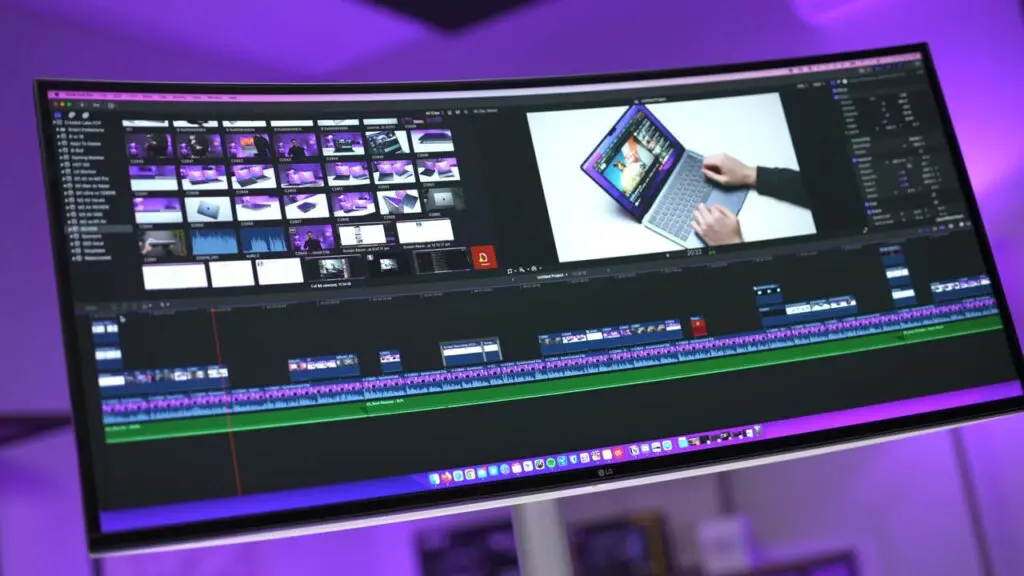
Personally, I love technology content. I chose the technology niche and several years and hundreds of videos later, I still enjoy what I do. If I’d chosen the finance niche for example (which pays better but I don’t find as interesting), I would have struggled a great deal to see the same success.
Instead, from the beginning of your career as a content creator, try to make videos on topics you really care about. This will make it much easier when you’re trying to expand your knowledge in your free time, and your viewers will notice that your videos are influenced by things like your personal opinion or your expert knowledge on a particular topic.
You’ve probably heard the saying, “Find a job you love, and you’ll never work a day in your life”, well the same thing applies here. Find a niche you enjoy, and creating videos will come naturally.
Not Giving People A Reason To Subscribe
This is more of a technical mistake that a lot of people forget about. Whenever you’re trying to improve viewership and engagement, your end goal is always to get more subscribers. In turn, this will increase revenue, whether that’s advertising content revenue, or views revenue.
When it comes to influencing your viewers to subscribe, there are several ways to go about it. Firstly, NEVER ask viewers to subscribe at the beginning of your video.
Seriously, I can’t BELIEVE some YouTubers do this.
The video hasn’t even started, why would someone want to subscribe?
You need to offer something of value. Create a unique, high-quality and engaging video FIRST, and then at the end, ask viewers to subscribe if they liked the content.
Alternatively, briefly discuss your future plans for the channel. Are you releasing a similar video in the future that viewers might want to watch? Maybe you’re doing a giveaway for subscribers, or reviewing a certain product.
These are all good reasons for someone to subscribe to you.
YouTube also has several ways to make it easier for someone to subscribe. You can add a subscribe element to the end of your videos.
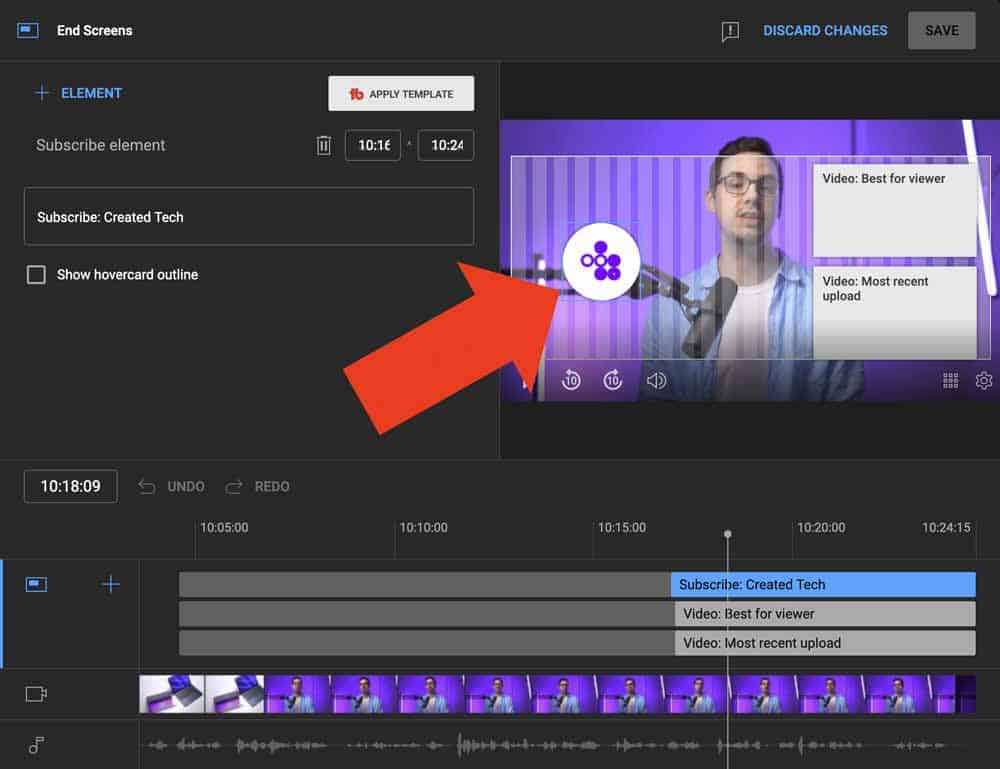
This element will pop up at a predetermined point during the end of your video and will allow viewers to subscribe with the click of a button. This can have a higher conversion rate than simply asking people to subscribe via the subscribe button, as the element is right in front of them on the screen.
If you look at a few other creators, you’ll notice that almost every successful YouTuber ends their video with a large subscribe button that people just can’t miss.
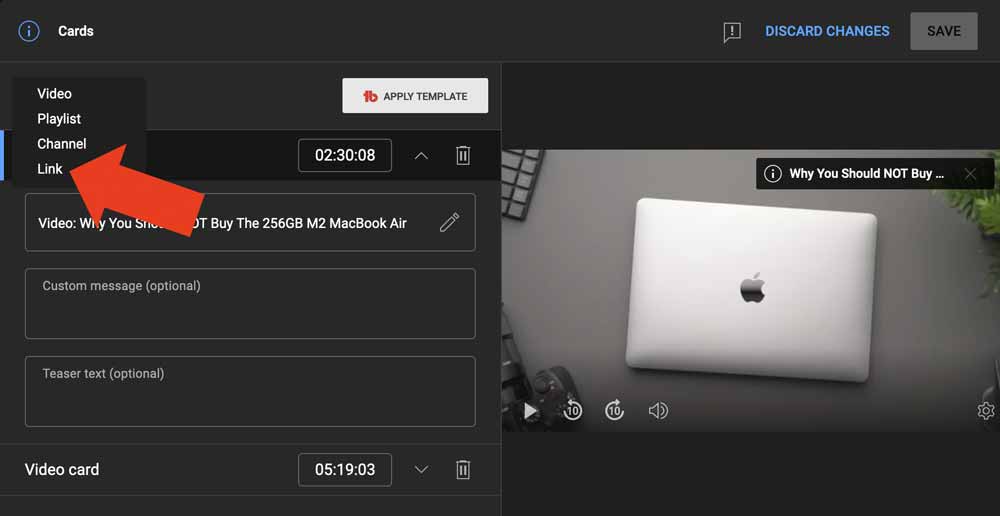
Alternatively, you can ask people to subscribe during the video (ideally not in the first half) and have a sponsored card pop up in the top right corner with a link to your YouTube channel’s subscribe feature.
Spending Too Much on Equipment
Arguably the largest misconception when it comes to YouTube is that you need to spend thousands of dollars on equipment to create a quality YouTube video. The truth is that you don’t, and in fact, many creators have started off with the most basic equipment possible, things they already had laying around at home.
Yes, now those same creators may have thousands of dollars of equipment, some may even have an editing crew that works for them. But here’s an idea — scroll back to some of their oldest videos, and note the quality they’re uploaded in. Most of the videos that have been around for a few years probably aren’t even recorded in full HD.

Depending on the type of videos you’re planning on creating, you may not even need any equipment. For example, if you’ll be recording tutorials on a particular topic, you only need a recording software, editing software, and possibly a webcam or a headset with a microphone, in case you want to do voiceovers. This is not only very simple, but also incredibly affordable.
This is how I started out on YouTube. I created content that I could simply record on the screen of my computer. Gaming videos, software tutorials – you name it. I only needed free screen-recording software like OBS, and an inexpensive microphone like the Rode NT-USB.
When I transitioned to content that required a camera, I used what I had lying around – like an iPhone or GoPro.
This is my advice to you: start with what you have. If you want to record yourself (or anything else you may need a camera for), use your smartphone. Most modern smartphones can record decent quality video, that should be enough. Once you’ve made enough money from YouTube views and ads, then you can invest in new equipment.
Pro tip – if you’re going to invest in ANYTHING early on in your YouTube career, make it audio. Your video could have the most stunning visual quality on the planet, but if the audio sucks, it’s not going to be enjoyable to watch.
Not Having a Strategy
Having a YouTube strategy is very important, especially if you have an idea on the direction you’d like your channel to take. Are you going to be uploading daily? Or weekly? How long do you think it will take before you start to see success? What type of videos do you want to create?

These things are all questions you should ask yourself at the beginning of your YouTube journey. It’s ok to change or alter them later on, but you should have a rough blueprint for your channel at all times.
Take a look at other channels in your niche, and see what kind of strategies they may have implemented. Then, sit down for 30 minutes and put together a few bullet points discussing what you want to achieve with your channel. Here’s mine for reference:
- Upload 1-2 high-quality videos in the technology niche every week
- In every new video, aim to learn a new editing technique or improve the quality in some small way
- Spend a few hours per week watching content from larger and more successful channels so I can learn how to improve my own content
- Aim for constant growth. Not necessarily specific subscriber targets, but each week should ideally bring more views, subscribers, and comments than the previous.
- Experiment with slightly different topics and video styles until I find which works the best
Pretty simple, right? You don’t need a detailed masterplan with Venn diagrams or crazy sketches. Just a few dot points.
Not Having Enough Patience
Like almost anything in life, success doesn’t come overnight.
It’s almost certain that your channel will take months, or even years to be successful.
It took me 10 years before I started to see significant success on YouTube. There was a lot of trial and error, and several years where I didn’t produce any content, but I didn’t give up. You can read more about my YouTube story if you’re interested.

Success is more than just creating a new video every once in a while — you need to create content that not only provides value to your audience, but also to YouTube itself. It’s a free platform that gives you the opportunity to talk to a global audience, but you need to show value before you get value (e.g. your video picking up in the YouTube algorithm).
True, some creators seemingly become popular overnight with a video or two going viral, but that’s seldom the case, and you’d be making a mistake if you were counting on that happening to you. Yes, it might happen, but it also might not, and you’d be much better off if you were to create content that shows your audience why they should subscribe to your channel.
Pro tip: if you’re really struggling with staying motivated, remember why you’re doing this. Imagine yourself when you’re finally successful. Being able to quit your job, earn a full-time income from YouTube, and never have to deal with coworkers or ignorant managers ever again.
As I’m writing this article, I’m just about to get on a plane to Dubai for a mini holiday. I didn’t need to request leave from work, or ask HR for permission. I just booked tickets and went.
Focusing on the Numbers Too Much
On the creator side, YouTube is full of numbers. There are plenty of data insights that let you measure audience engagement, track click-through rates on recent videos, craft tailored ads based on past activity or based on general location, you name it. They’re all made to measure the effectiveness of the videos you create, and help you develop and improve new content ideas.
That being said, if you only focus on those numbers and improving the statistics, that could very well prove to be counterproductive. The numbers do give you an idea how your videos are doing, but they’re not something you should focus on 100% of the time. You should also consider how your audience reacts in the YouTube video comments, or how your videos perform compared to other, similarly-sized channels.
As an example, you may create a video with a clickbait title and thumbnail that has millions of views within a couple of days. However, chances are that many of the viewers will notice the clickbait, and will have negative comments. This begs the question, do you stick to what the numbers say and keep doing clickbait titles, or do you adjust them to suit your audience better? There’s no correct answer here — it all depends on the specific situation, but my point is that it’s not always about the numbers.
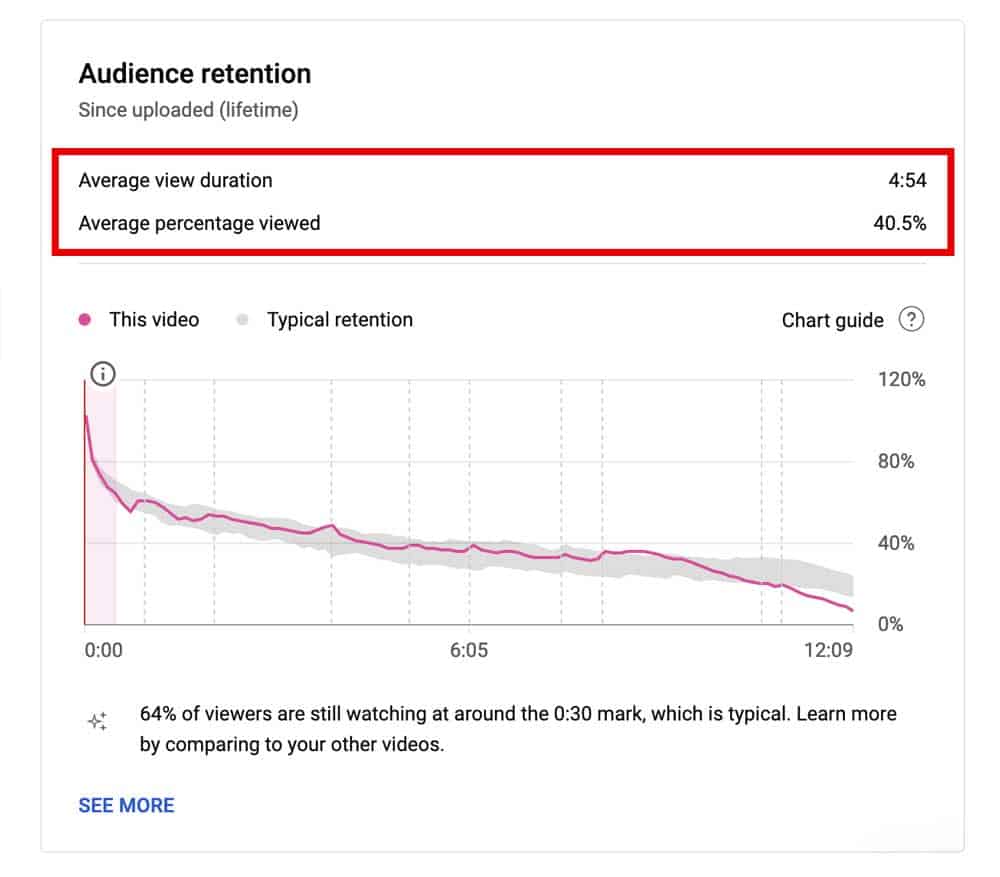
I’ve seen many channels go down the “numbers” route seeking quick financial gain by pumping out sensationalist or clickbait content. Sure, they might see success in the short-term, but long-term? Even though they may be getting millions of views per month, they have no fans. In fact, often their audience hates them and merely comments just to express their dissatisfaction.
The sad reality is, if these channels had simply taken the time to build a better community, they would make far more money in the long-term.
Being A Perfectionist
This is a mistake that’s very easy to make. I think most people want their channel to be absolutely perfect, with no “bad” videos and no videos that have bad statistics. Maybe you’re embarrassed about a video you’ve posted and want to delete it, or you notice a tiny, minor editing mistake and spend the next few hours rendering and uploading the video again.
Being a perfectionist is a mistake, and I’ll tell you why.
Now, I’m not saying you should be sloppy with your content, or drop your standards. You just have to understand that often YouTube can be a numbers game.
If you’re starting from scratch – you need videos on your channel, and you simply cannot afford to waste time and agonize over tiny details or making “perfect” videos.
My rule of thumb is 90%.
If I can get my video to 90% of my own “quality standards” (which are pretty high) it gets uploaded. No questions asked, and I immediately move on to the next video.
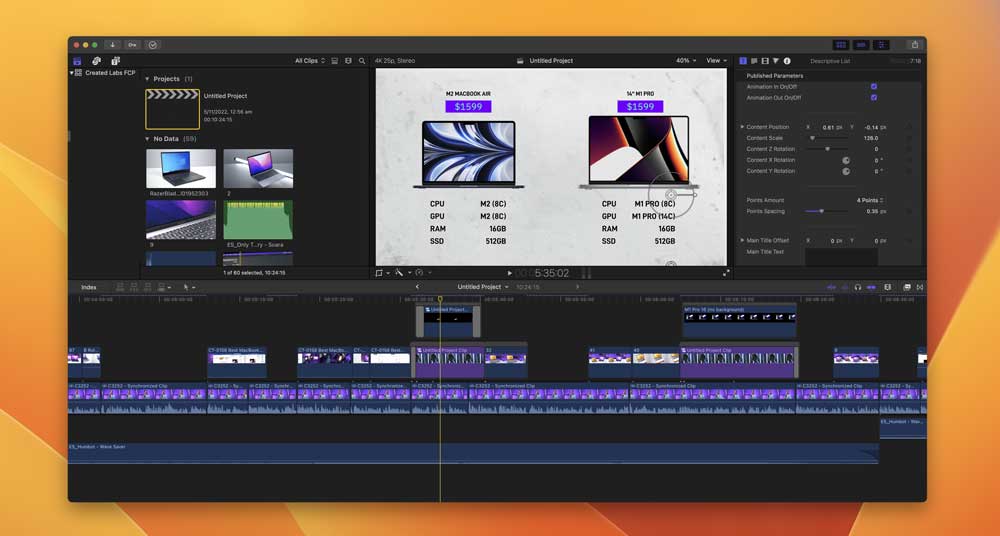
Sure, I could spend hours and hours perfecting that final 10%, but odds are no one watching the video will notice that extra effort.
I see time and time again videos of mine that were far from perfect perform exceptionally well.
This also extends to deleting old videos.
If you look at many large channels’ history, you’ll notice that they still have old videos uploaded when they were first starting off. Many of those videos are terrible, and objectively worse than the content you’re currently viewing by those same creators. And yet, they haven’t deleted activity like the videos they uploaded when they were starting out. You also want to avoid managing your privacy settings in a way that unlists those videos, too.
The main reason not to delete (or unlist/private) old content is monetization and site metrics. Among the many site statistics to understand, monetization is how much money you make from a certain video, but also from your entire channel in general. Deleting a YouTube video impacts your channel’s views, as well as the watch time, which is very important for monetization.
Just leave those videos up. The YouTube algorithm might even pick one up and cause it to go viral. I’ve had it happen many times to old videos.
Going Off-Topic With Your Videos
There are a lot of channels that are guilty of this. You have a whole set of videos that are tailored towards a particular audience, a particular niche, and then you decide to create something that’s a bit different. That’s not really an issue. But if that video goes viral and boosts your channel’s recognition, you’re left with a dilemma: do you shift towards capitalizing on that video and potentially changing up the entire channel, or do you stick with the sustainable engagement you’ve built with your current audience?
If your channel lacks focus, you’ll be tempted to follow up on that one video and create more like it. But if you have a strategy in mind, you’ll prioritize the audience you already have, the one you’ve built a rapport with, and the one that got your YouTube channel to where it is now.
Like I’ve discussed previously, it’s ok to change the strategy and direction of your channel. However, this decision is one only you can make. Do you think there’s more success and growth in a different direction, or with your current one?
For brand-new or smaller channels, this decision is much easier because you likely don’t have a big following yet. For more established channels, it can be much trickier, as your audience has come to expect a certain topic or video style from you.
Avoiding Collaborations with Other YouTubers
A lot of people seem to think that with YouTube, all you need to do is create content, shoot new videos and engage with your audience. That being said, when you’re trying to grow, you want all the exposure you can get, and collaborations can help with that.
What many new creators do is try to close themselves off from others, and do their own thing. True, you want to establish your own viewership, but collaborating with others that may or may not be in the same industry is more than okay. Not only do you have the chance to appear on a channel that may have more viewers and subscribers than yours, but you’ll also exchange knowledge with people that have been around for some time.
Wrapping Things Up
When all is said and done, YouTube is a beautiful platform where you can reach billions of people, share your thoughts and ideas with them, and make money while doing it. However, a few mistakes when starting off can easily impact the entire course of your channel, and not in a good way. I hope you know what they are now, and how to avoid them – good luck with your YouTube journey!





